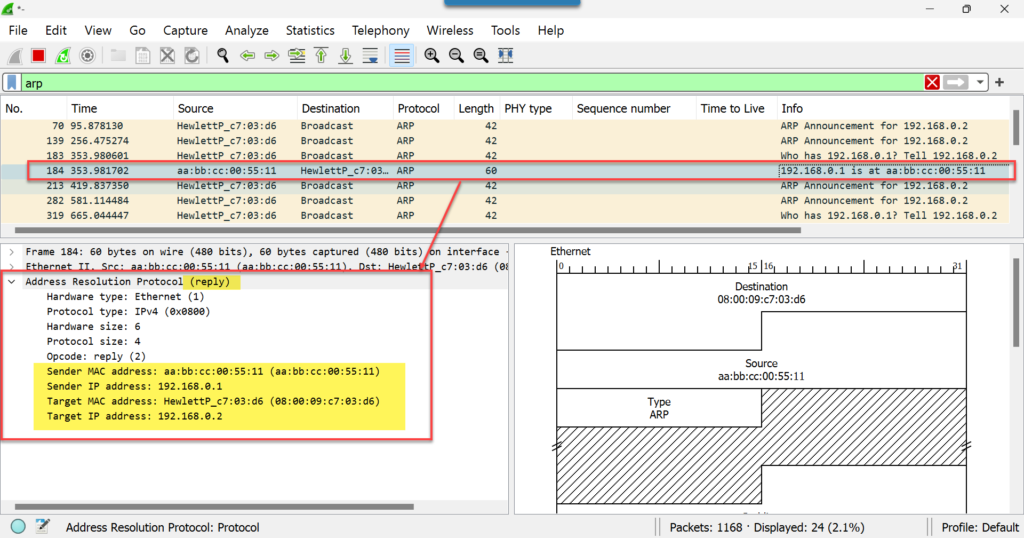ARP stands for Address Resolution Protocol. It is a communication protocol used in computer networks to map an IP address (Internet Protocol address) to a physical MAC (Media Access Control) address. ARP is essential for the proper functioning of Ethernet networks and is used to discover the hardware address of a device (such as a computer or a router) on the same local network segment when its IP address is known.
Here’s how ARP works:
- When a device on a local network wants to communicate with another device using its IP address, it first checks its ARP cache (a table that stores recently resolved IP-to-MAC address mappings) to see if it already knows the MAC address associated with that IP address. If it finds the entry in its ARP cache, it can use that MAC address for communication.
Example – Linux client arp cache

Example – Windows client arp cache

2. If the IP-to-MAC mapping is not found in the ARP cache, the device will send out an ARP request broadcast message to the entire local network segment, asking, “Who has this IP address?” This request includes the sender’s own MAC address.

3. The device with the matching IP address will respond to the ARP request with its MAC address. This response is unicast (sent directly to the requester), and the sender updates its ARP cache with the new mapping.

4. Once the requesting device knows the MAC address associated with the target IP address, it can use this information to communicate directly with the target device on the local network.
ARP is a fundamental protocol for local network communication and is crucial for devices to locate each other within the same network segment. It operates at the Data Link Layer (Layer 2).
Duplicate IP detection with ARP
- Duplicate IP detection is a process used in computer networks to identify and resolve situations where two or more devices on the same network segment have been assigned the same IP address.
- Duplicate IP addresses can cause network conflicts, communication issues, and disrupt the normal operation of devices on the network.
- Duplicate IP detection mechanisms are designed to prevent or quickly address such conflicts. Here’s how duplicate IP detection typically works:
Duplicate IP Detection
- Gratuitous ARP can also be used for duplicate IP address detection.
- Gratuitous ARP (Address Resolution Protocol) is a networking technique in which a device sends an ARP request for its own IP address on a local network segment. This may seem counterintuitive, as ARP requests are typically used to resolve IP addresses to MAC addresses of other devices on the network.
- When a device detects that another device on the network is using the same IP address, it can send a gratuitous ARP request with its IP-MAC mapping.
- If another device on the network is using the same IP address, it will respond with its MAC address, indicating a conflict.
SW1

R5

The network is functioning as expected when each device has a unique IP address

Changing the IP address on R5 should cause gratuitous ARP to detect the duplicate IP address


- A network disruption occurred due to the misconfiguration
- OSPF neighborship went down
- The device reported a duplicate IP address of 192.168.0.2
The original owner of 192.168.0.2 (CW-SW-1) sent an ARP request


ARP Frame Format
Request
Reply

